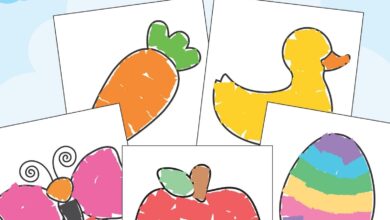Halloween Craft Ideas
The importance of Art and Craft is not only restricted to expressing oneself. However, it’s a great outlet to explore, express, and create, especially for children during their growing years when spoken language is challenging for them.
Arts and Crafts is an integral tool in child development as it fuels their curiosity, creativity and provides them with an outlet to observe, express, explore, excel through creating things. In addition, the freedom of creating and experimenting with this practice provides them not only helps them with skills such as motor, language, problem-solving but helps them to deal with various stressors while simultaneously discovering and familiarizing themselves, others, and the environment around them. Kids love to do arts and crafts and it’s important for them to practice it both at school and at home.
Here are 6 important areas of child development that you can help your kids practice by doing art and crafts with them at home in Hong Kong.
1. Motor skills
When kids use their fingers to manipulate art materials they are developing their fine motors skills as they use those small muscles in their hands. Their bilateral coordination skills improve as they learn to use both hands at the same time.
All this happens when they paint, colour, glue and cut. The quicker their fine motors skills develop the more they can do on their own, from eating by themselves to tying their own shoelaces. I remember when we first taught Kelly to tie her laces, she could tie them herself after a day! Amazing!
2. Literacy
Early child literacy skills in art and crafts cover a wide range of areas – from speaking and reading to listening and understanding. When kids make art or crafts they get to talk about their work which develops their communication skills. “Why did you choose that colour?” “Tell me about what you made.” They learn new vocabulary from parents and when following verbal instructions they use their listening skills. A skill all parents want our kids to grasp as soon as possible so they can start listening to us!
3. Math Concepts
Basic math skills are often not thought of as being part of art and crafts activities. But math skills are used frequently and have a positive effect of developing mathematical skills in preschool children.
Kids get to learn about and recognise different shapes, count and sort out their art supplies and even measure out lengths and sizes of art materials. To master math, you need good thinking and problem-solving skills which art and crafts activities help with as well.
4. Creativity
Art allows kids to develop their creativity which is important throughout their lives. By doing something creative, you allow for self-expression and this lets kids express (and cope with) their feelings. It also fosters mental growth in children by providing opportunities for trying out new ideas, new ways of thinking and problem-solving.
I came across this interesting article about Mary Ann Kohl who is the author of numerous award-winning art idea books for children. In an interview, she says “In children, creativity develops from their experiences with the process, rather than concern for the finished product. Creativity is not to be confused with talent, skill, or intelligence.
5. Self-Esteem
Art and craft activities give kids a sense of achievement and allow them to take pride in their work which builds confidence. Making art is a great, safe way to discover that it’s okay to make mistakes and that getting things ‘wrong’ can lead you to a whole new idea. Kids get to try new things and also develop their “self-regulation skills” (e.g. when waiting for paint or glue to dry). This helps them develop patience, which all kids need help with! Even me sometimes!
6. Quality time / Parent Bonding
Kids just love to spend time with their parents and what better way than to do arts and crafts together! You get to spend quality time bonding with your kids and at the same time, you are creating lifelong memories to cherish. While you are crafting together you get to talk about what you are making and discuss different ideas and subject matters. You can talk about what you think, feel and care about. And as an even added bonus, your child isn’t using technology or looking at a screen!













